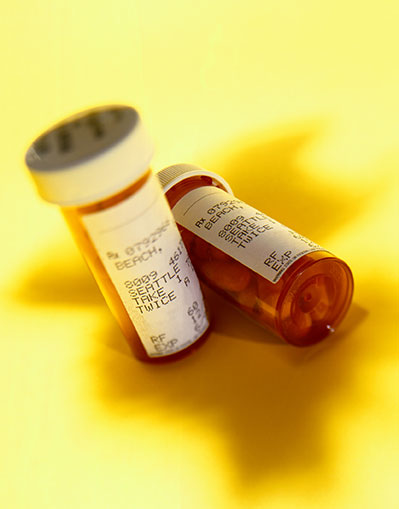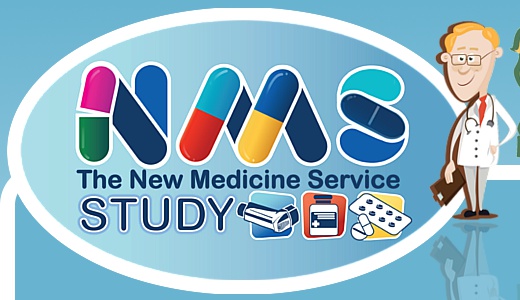
April 25, 2016, by Editor
What does community pharmacy environment in the UK look like and how as a pharmacist can you drive innovation and change?
Th is blog has been written by Robert Oakley, one of our third year undergraduate students. It is the second of four posts about his experience in attending a King’s Fund conference in February 2016 on “Commissioning person-centred care for vulnerable groups: what role does pharmacy play?”.
is blog has been written by Robert Oakley, one of our third year undergraduate students. It is the second of four posts about his experience in attending a King’s Fund conference in February 2016 on “Commissioning person-centred care for vulnerable groups: what role does pharmacy play?”.
The current scenario of pharmacy’s input to vulnerable patient groups and disease management in the community setting has many areas for improvement.
Currently, community pharmacy generally only comes into contact with vulnerable patients and patients in general through a medicines supply role. Community pharmacy’s bread winner is its essential commissioned service of dispensing. This driver on dispensing as large a volume of prescriptions as possible can result in many patients who are purely supplied with medicines and all too often do not have their medicines explained to them. This can result in vulnerable patients feeling anxious and worried when they visit a pharmacy which has a particularly negative impact on those with learning difficulties.
The pharmacy landscape is also changing. Many are of the opinion that the dispensing role of pharmacy in the UK has a limited lifespan. This is due to the emergence of cheap, convenient hub and spoke “Amazon” based dispensing models emerging in the U.S.A and similar pilots being discussed between UK companies. These models are also encouraged with a recent government cut of the pharmacy national budget of 6% and decreasing returns from the drug tariff for medicines supplied by pharmacies.
The New Medicines Service (NMS) and Medicines Use Reviews (MURs) in the community setting have opened the doors for a new breed of service led pharmacy but the time that pharmacy has to further prove its worth and diversify is fast running out. Some GPs are of the opinion that currently community pharmacists do not perform enough of a much needed supportive role with vulnerable patients in particular. This may be due to a fundamental lack of communication between the two professions.
However, with GPs overstretched more than ever there is a definitive need for pharmacy support, particularly for managing minor ailments and for specialist clinical pharmacists who can manage complicated patients on multiple medicines. Potentially there could be a pharmacist in every community that GPs could triage their patients to.
Barriers exist which are probably responsible for the stalemate on the pharmacy service front in recent years.
- First, is that there isn’t much available evidence for pharmacy based interventions apart from MURs and NMS that are both clinically and cost effective, therefore other services do not get commissioned. More research is needed for prospective interventions, particularly from an economic perspective as commissioners want hard evidence that their pound will be invested wisely.
- Second, community pharmacists are not integrated into the primary care Multidisciplinary Team (MDT). Currently, community pharmacists only have access to a Summary Care Record which is a snap shot of a patients’ full medical record. Therefore, it is almost impossible to make well informed, safe interventions and realise a pharmacists’ potential. Furthermore, community pharmacists have no easy way of communicating with other members of the MDT. With all of us instant messaging one another it seems ludicrous that a pharmacist usually has to make several phone calls to get hold of the healthcare professional they require. The only places where this communication barrier is devolving is in a Clinical Commissioning Group (CCG), GP practice or research setting.
- Finally, the funding stream for community pharmacy is divided into essential, advanced and enhanced (locally commissioned) services. Essential services such as dispensing and advanced services such as MURs are nationally commissioned, making it easy for every pharmacy to receive funding for delivering the service. Whereas, enhanced services require a bid for the service to be made to local authorities for funding a local initiative. These bids are much harder to secure.
So how can we move forward from this seemingly bleak situation?
First things first, we need to remember we are in an integral position to local communities. Health Watch England has expressed how the public love the convenience of community pharmacies and the range of specialist advice they are able to offer. We also need to remember that the patient is at the face of everything that we do and we can talk to them! We need to work with patients and patient organisations to drive change. They ultimately are the most powerful people in the NHS. We should enable patients to have a proactive role in improving their care.
According to the National Director of NHS Right Care, disease management systems within the NHS are not well optimised. This results in a post-code lottery in patient satisfaction, mortality and healthcare costs. Producing a healthcare system with variability, resulting in high expenditure and low outcomes. If we want the NHS to continue this unsustainable model must be reversed.
But how can we engage pharmacy expertise in the design and delivery of better care?
First, we can start with prevention. As pharmacists we can empower patients by educating them on their health conditions, medication and how to lead healthier lifestyles. Second, we can prevent mortality and overall health costs via early detection of diseases by keeping a close eye on our patients and encouraging them to routinely have a health check-up with their pharmacist or GP. This can range from blood pressure and blood sugar checks to chlamydia screening. Finally, ensure secondary prevention of diseases by adhering to NICE care pathway processes is implemented. This can be achieved by working with other members of the MDT to a greater extent, establishing dialogue between the professions, feeding back on prescribing.
Given that most pharmacists have a huge amount of contact with the general public from their convenient location on the high street we are extremely well placed to deliver any form of health intervention. We are also in a perfect position to keep an eye on our patients as most members of the public find it easier to talk to a pharmacist about issues they may not want to bother their GP with.Robert Oakley
This is all very well, but how can we design interventions that play on our strengths? How do we fit into the picture when commissioners think about care?
The key is understanding the health needs of your area. Consult Clinical Commissioning Groups decision trees, find out what problems are being prioritised in your area. What financial variations in clinical services exist? Can you improve financial consistency through delivering a well-designed clinical service? Do the health interventions in place match patients’ needs? Are the services that are being provided to patients being used, do patients want them?
Once you have developed an understanding of what can be improved don’t apportion blame but formulate a proposal which demonstrates clinical and economic viability. Involve commissioners and other members of the MDT in designing solutions. Finally, when you have decided how to make things optimal establish how to implement the change and isolate, then address reasons for non-delivery.
Common barriers for non-delivery include GP practices refusing additional patients as they are already struggling to meet demand. Be innovative, work with GPs and the wider MDT, this can reduce the healthcare burden on MDT member and deliver results. A prime example can be sourced locally to Derbyshire where prescribing of antibiotics was reduced by a third purely due to a community pharmacist-led feedback loop to local GPs on their prescribing.
Some other important points worth taking into consideration are that the government allocates most of its healthcare budget locally, not nationally. Therefore, it is important to establish a good relationship with your CCG and adapt services to local need.
 Another important issue was highlighted in a Cochrane patient decision medicines review report. This report emphasised that most healthcare costs arise based on a perception gap between what patients and healthcare professionals want. For example, a doctor may prescribe expensive anticoagulants to an elderly stroke patient when in actual fact around 40% of this patient group do not wish to be anticoagulated due to the impact it has on their quality of life. Therefore ill-informed interventions result in huge medicines wastage and non-optimal outcomes for each patient. It is therefore important that any idea that you have is well informed by what the patients in your area actually want, not what you think that they need.
Another important issue was highlighted in a Cochrane patient decision medicines review report. This report emphasised that most healthcare costs arise based on a perception gap between what patients and healthcare professionals want. For example, a doctor may prescribe expensive anticoagulants to an elderly stroke patient when in actual fact around 40% of this patient group do not wish to be anticoagulated due to the impact it has on their quality of life. Therefore ill-informed interventions result in huge medicines wastage and non-optimal outcomes for each patient. It is therefore important that any idea that you have is well informed by what the patients in your area actually want, not what you think that they need.
To tackle this a simple mnemonic can be remembered: ask, record, highlight, share, and act. By acting on every point of this mnemonic we can establish more personal relationships with patients, the wider MDT and commissioners. Communication is key.
The future is going to be tough, but if we’re savvy, establish where there is a need and act, we can integrate even more into the MDT and utilise our skill set to improve our patient’s lives even further.
No comments yet, fill out a comment to be the first


Leave a Reply